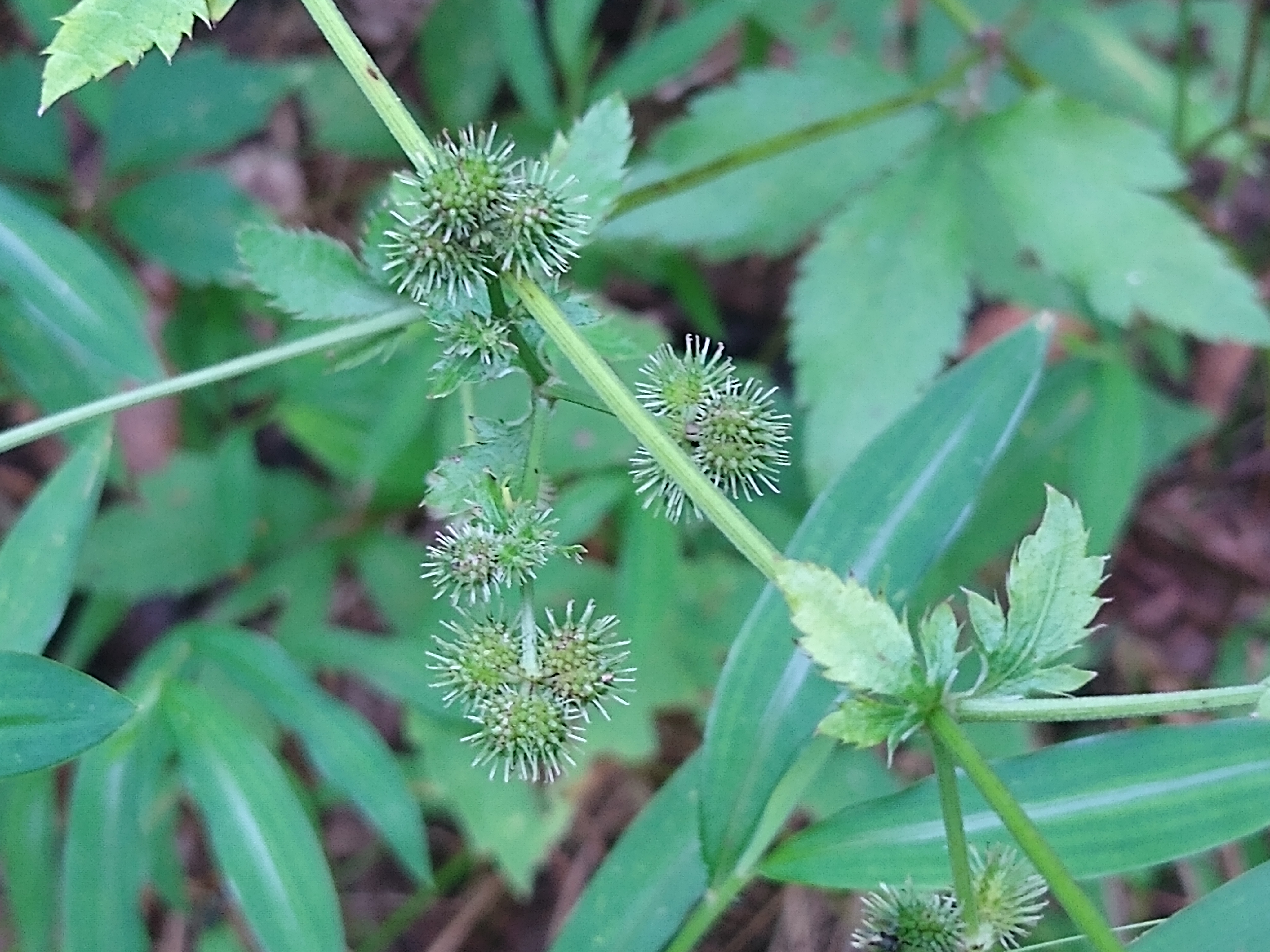Field Notes: Hitchhiking Seeds
August 31, 2020 4:44 pm

By Ellen Powell, DOF Conservation Education Coordinator
When you think of summer hitchhikers, you probably think of chiggers and ticks. Ick! But did you know that beggar-ticks and harvest lice might also grab a ride on your clothes? Don’t worry, these don’t carry diseases or make you itch. They are the harmless seeds of some of our native plants.
Seeds that cling are adapted to travel to new locations on the fur of animals. When a furry mammal brushes against one of these plants, it dislodges and carries away sticky seeds. Often the seeds ride along until the animal stops to groom itself, at which point it pulls them off and drops them. In this way, the plants are able to spread to new locations.
Plants in the genus Bidens are commonly known as tickseeds, and their seeds are often called beggar-ticks. The slender, two-pronged seeds easily hook onto fur or fabric. Bidens bipinnata, known as Spanish needles, has beautiful fern-like leaves and seeds that may be ¾ inch long.

The genus Desmodium has many species that are hard to tell apart. Known as tick-trefoils or stick-tights, they have three-parted compound leaves and flowers that are often pink or purple. Tick-trefoils are in the legume family, like beans and peas. In fact, their chains of flattened seeds might remind you of peapods. The seeds have a rough texture like Velcro. The slightest brush of a pant leg is enough to stick them fast.

Black snakeroot (Sanicula canadensis) has small round seeds that bristle like tiny hedgehogs. The plants are very shade tolerant and can be found in forest understories all over Virginia.

Harvest-lice are the seeds of Agrimonia parviflora, another woodland understory plant. They are shaped like prickly spinning tops.

As you walk the trails of late summer, you may find your clothing substituting for animal fur, helping to transport seeds to new growing areas. Can you find other seeds that cling? Attach an old sock or piece of felt to a long stick and drag it through the woods or a field edge. You might be surprised at the hitchhikers you pick up!
Tags: Woodland Plants
Category: Education
